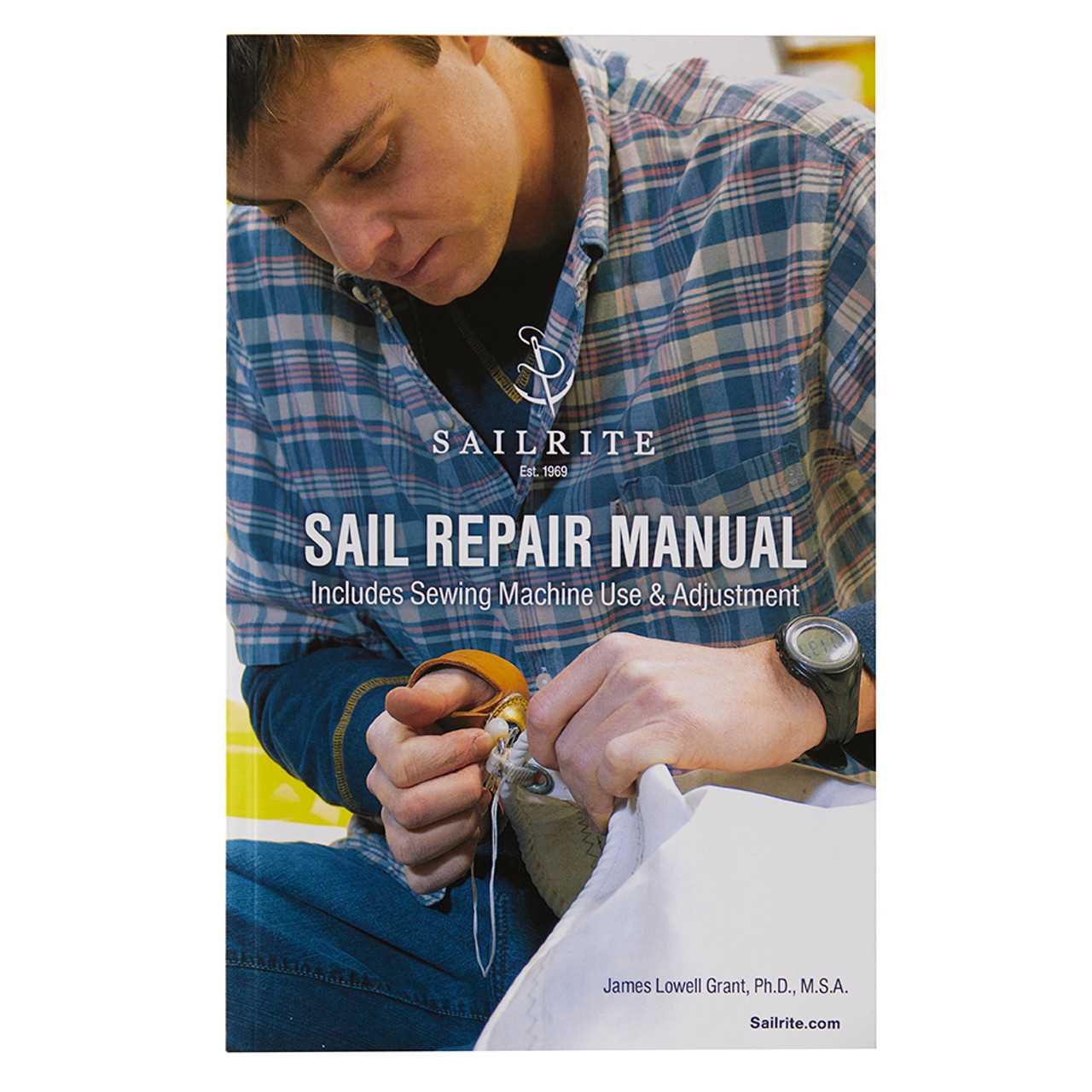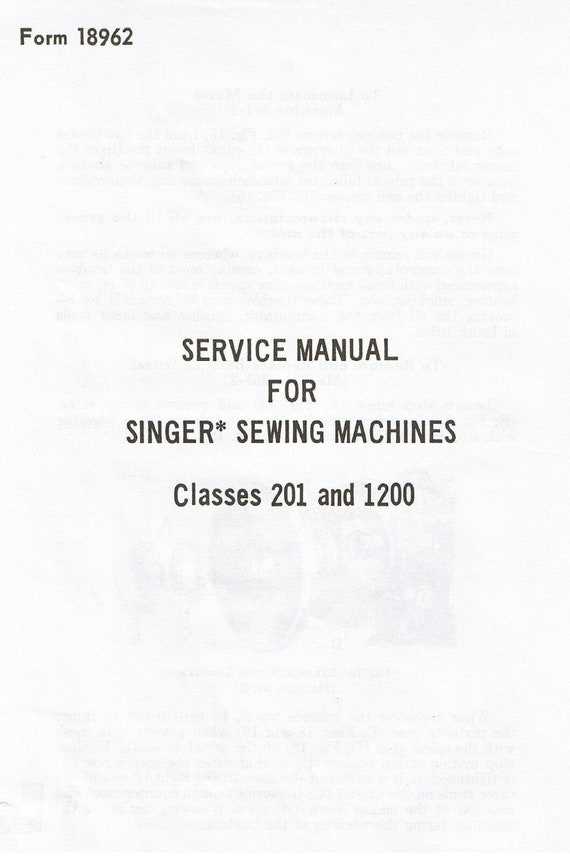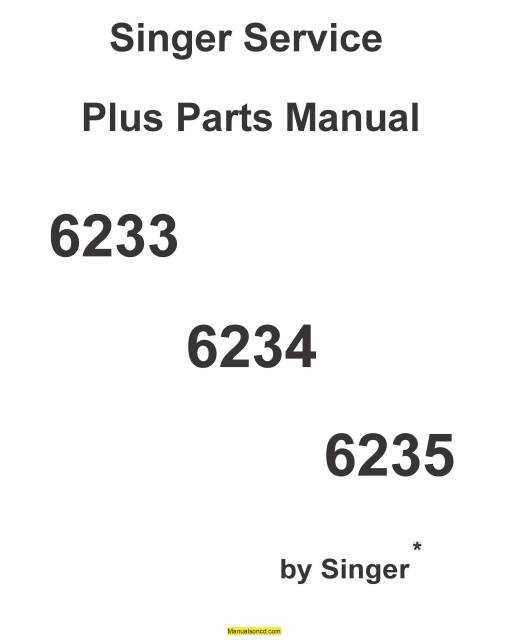Essential Guide to Sewing Machine Repair and Maintenance

Maintaining intricate devices is essential for ensuring their longevity and optimal performance. Understanding the components and mechanisms at play can empower users to tackle common issues that may arise during operation. This section aims to provide insightful strategies and practical advice for addressing typical challenges faced by enthusiasts and professionals alike.
Knowledge of the inner workings is crucial for troubleshooting and resolving faults effectively. By familiarizing oneself with various parts and their functions, individuals can confidently navigate repairs and adjustments. This guide offers step-by-step instructions and tips that will simplify the process, making it accessible even to those with limited experience.
Whether it’s a minor adjustment or a more complex issue, having a reliable reference can significantly reduce frustration. Empowerment through education allows users to take control of their tools, leading to improved results and enhanced satisfaction in their creative pursuits. Explore the following sections to gain a deeper understanding and discover effective solutions tailored to your needs.
Sewing Machine Basics and Components
This section provides an overview of fundamental concepts and essential parts that make up a stitching device. Understanding these elements is crucial for effective use and maintenance, ensuring optimal performance and longevity.
Core Elements: At the heart of any stitching device lies a mechanism that creates interlocking threads. This is achieved through various components that work in harmony, including the needle, bobbin, and feed dogs. Each of these plays a vital role in producing consistent and high-quality stitches.
Needle: The needle is one of the most critical components, responsible for piercing the fabric and guiding the upper thread. Different sizes and types are available, each designed for specific materials and tasks.
Bobbin: Located beneath the needle area, the bobbin holds the lower thread. Proper insertion and tension adjustment of the bobbin are essential for achieving balanced stitches.
Feed Dogs: These small, serrated elements move the fabric through the device during stitching. Their movement is synchronized with the needle’s action, allowing for even feeding and precise control.
Other Components: Additional parts include the presser foot, which holds the fabric in place, and the tension discs, which regulate thread tension. Understanding how each part functions together enhances the overall sewing experience.
Familiarity with these basic components not only aids in the effective use of the equipment but also empowers individuals to troubleshoot common issues and enhance their crafting skills.
Common Sewing Machine Issues
Many individuals encounter various challenges when working with textile equipment. These problems can hinder the creative process and lead to frustration. Understanding the frequent complications can help users troubleshoot effectively and maintain optimal performance.
Thread Bunching is a prevalent issue that often arises during use. This typically occurs when the thread tension is not properly adjusted. Users should check the threading path and ensure that the upper and lower threads are correctly aligned.
Skipped Stitches can disrupt the flow of any project. This often happens when the needle is dull or damaged. It is advisable to replace the needle regularly and select the appropriate type for the fabric being used.
Fabric Jamming is another common complication. This usually results from the fabric not being fed correctly through the feed dogs. Ensuring that the fabric is properly positioned and that the presser foot is lowered can help alleviate this issue.
Unusual Noises can indicate underlying problems. Grinding or clunking sounds may suggest that the internal mechanisms require lubrication or adjustment. Regular maintenance can help prevent these issues from escalating.
By familiarizing oneself with these typical challenges, users can enhance their proficiency and enjoy a smoother experience with their textile endeavors.
Tools Needed for Repairs
When it comes to maintaining and fixing your equipment, having the right set of instruments is crucial. These essential items will ensure that you can effectively address any issues that arise, allowing for smooth operation and longevity of your tools. Understanding what you need before starting any project can save time and prevent frustration.
Essential Instruments
Start with basic hand tools, including a screwdriver set, which is vital for loosening or tightening screws. A wrench is also necessary for adjusting various components. Additionally, consider investing in precision pliers to handle delicate parts safely.
Maintenance Supplies
Beyond hand tools, certain supplies are indispensable for upkeep. Stock up on lubricants to keep moving parts functioning smoothly. Cleaning brushes and cloths are important for removing dust and debris that can interfere with performance. Lastly, a reliable work surface will help maintain organization and efficiency while you work.
Step-by-Step Troubleshooting Guide
This guide provides a structured approach to identify and resolve common issues that may arise during the operation of your textile crafting equipment. By following the steps outlined below, you can effectively diagnose problems and implement solutions to ensure smooth functionality.
Common Issues and Solutions
| Issue | Possible Causes | Solutions |
|---|---|---|
| Thread not moving | Incorrect threading, tangled thread | Re-thread the device, check for knots |
| Skipped stitches | Needle damage, wrong needle type | Replace the needle, ensure it is suitable for the fabric |
| Unusual noises | Lack of lubrication, loose parts | Lubricate moving parts, tighten screws |
| Fabric not feeding | Feed dogs not engaged, obstruction | Check feed dog position, clear any debris |
Final Tips
Regular maintenance is key to prolonging the lifespan of your equipment. Always consult the manufacturer’s guidelines for specific care instructions and ensure that you are using compatible materials and accessories.
How to Clean Your Sewing Machine

Regular maintenance is essential to ensure optimal performance of your crafting tools. Keeping them free from dust, lint, and debris will not only enhance functionality but also prolong their lifespan. Here, we’ll discuss effective techniques for maintaining cleanliness and ensuring smooth operation.
Gather Necessary Supplies
Before starting the cleaning process, it’s important to assemble the right tools. You will need a soft brush, lint-free cloths, and a drop of appropriate lubricant. Having these items ready will facilitate a thorough cleaning session.
Step-by-Step Cleaning Process
Begin by disconnecting the power source to ensure safety. Use the soft brush to gently remove dust and fibers from accessible areas. Pay special attention to the feed dogs and surrounding parts. Wipe down surfaces with a lint-free cloth to eliminate any remaining particles. Finally, apply a small amount of lubricant to moving parts as per the manufacturer’s guidelines to keep everything running smoothly.
Following these steps regularly will help maintain the efficiency of your crafting tools, ensuring they serve you well for years to come.
Replacing the Sewing Machine Needle
Changing the needle is a fundamental maintenance task that ensures optimal performance of your crafting device. A fresh needle can greatly enhance stitch quality and prevent issues such as skipped stitches or thread breakage.
Steps to Follow:
Begin by gathering the necessary tools: a new needle suitable for your project, a screwdriver (if required), and a clean workspace. Make sure the device is powered off to ensure safety during the process.
Next, remove the old needle. This typically involves loosening the needle clamp screw. Carefully slide the needle out of its holder, paying attention to the orientation–most needles have a flat side that aligns with the clamp.
Once the old needle is removed, insert the new needle into the holder. Ensure that the flat side is facing the correct direction and push it up as far as it will go. Tighten the clamp screw securely to hold the needle in place.
Final Check: After replacing the needle, it’s advisable to manually turn the handwheel to ensure everything moves smoothly. This simple check can save you from potential problems during your next crafting session.
Adjusting Tension Settings Explained

Understanding the balance of thread tightness is crucial for achieving optimal results in any textile project. Proper adjustments can enhance the quality of your stitches, ensuring they are neither too loose nor too tight. This section delves into the importance of these settings and how they influence overall performance.
Thread tension refers to the pressure applied to the threads as they pass through the fabric. When these settings are correctly calibrated, the threads interlock seamlessly, creating a sturdy and visually appealing seam. On the other hand, improper adjustments can lead to a range of issues, including puckering, breaking, or uneven stitching.
To achieve the right balance, begin by evaluating the type of fabric you are using. Different materials require varying degrees of tightness. For instance, lightweight fabrics may need looser settings, while heavier textiles often benefit from a firmer grip. Experimentation is key; start with the manufacturer’s recommendations and adjust as needed based on your project’s requirements.
Another critical factor to consider is the type of thread utilized. Thicker threads generally necessitate increased tension, while finer threads may require a softer touch. Regular testing on fabric scraps can help you fine-tune these settings before committing to your main project.
In summary, mastering the art of thread tightness is essential for achieving high-quality results in your textile endeavors. By understanding and adjusting these settings thoughtfully, you can elevate your craftsmanship and ensure beautiful finishes every time.
Fixing Thread Jamming Problems
Dealing with entangled threads can be a frustrating experience, often leading to interruptions during your crafting sessions. Understanding the underlying causes of these issues is essential for maintaining smooth operations and achieving the desired results. In this section, we will explore common culprits and effective strategies to eliminate jamming.
1. Check the Threading Path: Ensure that the filament is threaded correctly through all guides and tension discs. Misalignment can lead to excessive friction, causing the thread to snag.
2. Examine the Tension: Improper tension settings can result in loose or overly tight threads. Adjusting the tension can help achieve a balanced feed, minimizing the risk of jamming.
3. Inspect the Bobbin: A poorly wound bobbin can contribute to complications. Verify that the bobbin is evenly wound and inserted correctly. A damaged or mismatched bobbin can also cause issues.
4. Clean Regularly: Dust and lint buildup can obstruct the flow of the thread. Regular cleaning of the interior components is crucial for optimal performance and preventing future problems.
5. Use Quality Materials: The choice of thread and fabric plays a significant role in performance. Opt for high-quality threads that are suitable for your projects to reduce the likelihood of jamming.
By addressing these factors, you can significantly improve the performance of your equipment and enjoy a more seamless crafting experience.
Maintenance Tips for Longevity
Ensuring the extended life of your equipment involves consistent care and attention. Regular upkeep not only enhances performance but also minimizes the need for future interventions. Adopting a proactive approach to maintenance can significantly extend the lifespan of your tools.
Begin with routine cleaning to remove dust and debris that can accumulate over time. Use a soft brush or cloth to gently wipe surfaces, paying close attention to crevices where particles may gather. This simple step can prevent wear and tear, keeping your device in optimal condition.
Lubrication is essential for smooth operation. Apply appropriate oil to moving parts as recommended, ensuring that everything functions harmoniously. Over time, this practice will help reduce friction and prolong the durability of internal components.
Regularly check and replace any worn or damaged accessories. This includes belts, needles, and other elements that can affect performance. Timely replacements can prevent more significant issues and ensure that your equipment runs efficiently.
Finally, store your tools in a dry, temperature-controlled environment. Avoid exposure to extreme conditions that could lead to rust or degradation. Proper storage practices will safeguard your investment and maintain functionality for years to come.
Identifying Electrical Issues Safely
When dealing with electrical devices, recognizing potential faults is crucial for maintaining their functionality and ensuring user safety. This section outlines essential steps to diagnose electrical concerns without compromising your well-being or causing further damage to the equipment.
Understanding Warning Signs
Be vigilant for any unusual symptoms, such as inconsistent power flow, strange noises, or unusual smells. These indicators can suggest underlying problems that require immediate attention. Never ignore these warning signs, as they may escalate into more severe issues if left unaddressed.
Safety First: Precautions to Take
Before investigating any electrical faults, always disconnect the device from its power source. Utilize insulated tools and wear protective gear to minimize risks. Additionally, consult the user guidelines to familiarize yourself with the specific components involved. Prioritizing safety ensures that you can assess the situation effectively without exposing yourself to hazards.
Understanding Stitch Settings and Functions
When it comes to creating beautiful fabric projects, the ability to manipulate various settings is essential. Each adjustment plays a vital role in achieving desired outcomes, whether it’s for decorative purposes or practical applications. Knowing how to navigate these options can elevate your craftsmanship and ensure quality results.
Different configurations allow for versatility in stitching techniques. Familiarity with these options empowers you to select the right one for your specific needs. Here are some key settings to consider:
- Stitch Length: This determines how long each stitch will be, affecting the overall appearance and strength of the seams.
- Stitch Width: Wider settings can create decorative effects, while narrower settings provide more precision for fine work.
- Tension Adjustment: Proper tension is crucial for balanced stitching, impacting both the top and bottom threads’ interaction.
Additionally, different functions cater to various techniques, enhancing your ability to create intricate designs. Here are some common functions you may encounter:
- Straight Stitch: The most basic and widely used, perfect for seams.
- Zigzag Stitch: Ideal for finishing edges and providing stretch to seams.
- Buttonhole Function: Specifically designed for crafting neat buttonholes with precision.
- Decorative Stitches: A range of patterns available for embellishing projects.
Understanding these settings and functions will enhance your ability to create with confidence, allowing for a broader range of creative expression in your textile endeavors.
Upgrading Parts for Better Performance
Enhancing the functionality of your equipment can significantly impact its efficiency and output. By selecting and replacing certain components, users can experience improved precision, speed, and overall usability. This section explores various upgrades that can lead to a more satisfying experience while working with textiles.
One crucial area for enhancement is the needle. Choosing the right type and size for specific materials not only improves stitching quality but also minimizes the risk of damage to fabrics. For instance, specialized needles designed for heavy fabrics can provide cleaner results and reduce the chances of skipped stitches.
Another important component to consider is the foot. Various feet are available for different tasks, such as quilting, zippers, or blind hems. Upgrading to a more suitable foot can facilitate smoother operations and better outcomes in your projects.
Additionally, examining the feed dogs can lead to substantial improvements. Upgrading these parts can enhance fabric movement, ensuring consistent feeding and preventing bunching or shifting during the process. This is especially beneficial when working with tricky materials.
Lastly, the power source should not be overlooked. Investing in a reliable motor or electrical components can enhance speed and reliability, allowing for longer periods of uninterrupted work. A stable power supply is essential for maintaining performance during intensive tasks.
By focusing on these areas, individuals can tailor their equipment to better meet their needs, leading to a more enjoyable and productive experience in their creative endeavors.
When to Seek Professional Help
Knowing when to call in an expert can save you time and frustration. While some issues can be resolved through basic troubleshooting, there are circumstances where the skills of a trained technician are essential. Recognizing these situations can ensure that your equipment continues to function optimally and safely.
Signs of Serious Problems

Be alert for signs that indicate a more significant issue. Unusual noises, persistent jams, or error messages that persist despite attempts at resolution are clear red flags. If basic adjustments and cleaning do not yield results, it is advisable to seek assistance. Attempting further fixes without proper knowledge may exacerbate the problem.
Complex Repairs
Some situations demand a level of expertise that goes beyond simple DIY solutions. For instance, when dealing with electrical components or internal mechanisms, it’s crucial to consult a professional. Not only does this protect the integrity of your equipment, but it also safeguards your own safety. Trust the professionals for complex tasks to avoid potential hazards.